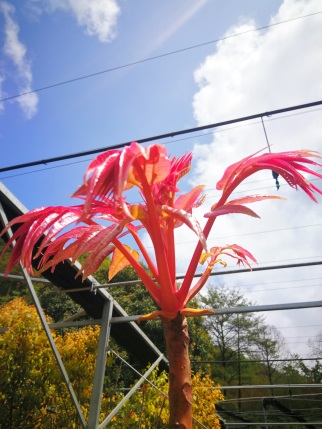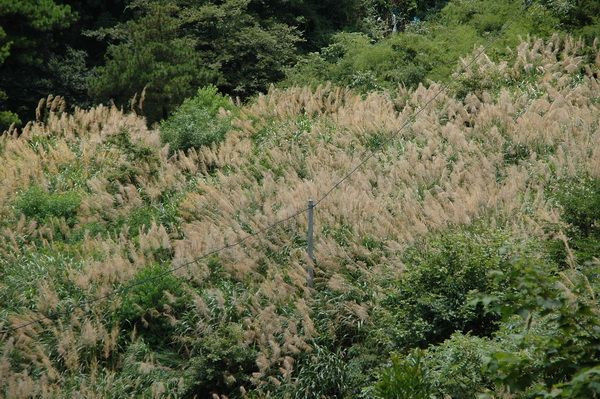搜索结果: 1-15 共查到“C. sinensis”相关记录74条 . 查询时间(0.078 秒)


Classification of Toona Sinensis Young Leaves Using Machine Learning And UAV-Borne Hyperspectral Imagery
Classification Toona Sinensis Young Leaves
2023/6/2

Genetic analysis of the early bud flush trait of tea plants (Camellia sinensis) in the cultivar ‘Emei Wenchun’ and its open-pollinated offspring(图)
Genetic analysis tea plants Camellia sinensis cultivar ‘Emei Wenchun’
2024/7/30
The timing of bud flush (TBF) in the spring is one of the most important agronomic traits of tea plants (Camellia sinensis). In this study, we designed an open-pollination breeding program using ‘Emei...
Identification and Functional Analysis of Two Alcohol Dehydrogenase Genes Involved in Catalyzing the Reduction of (Z)‑3-Hexenal into (Z)‑3-Hexenol in Tea Plants (Camellia sinensis)
乙醇脱氢酶 ADH AsODNs Camellia sinensis
2023/4/19
Alcohol dehydrogenase (ADH) is a vital enzyme in the biosynthesis pathway of six-carbon volatiles in plants. However, little is known about its functions in tea plants. Here, we identified two ADH gen...
Non-destructive Measurements of Toona sinensis Chlorophyll and Nitrogen Content Under Drought Stress Using Near Infrared Spectroscopy
Toona Chlorophyll Nitrogen Content Drought Stress
2023/6/2
Characterization of CsTSI in the Biosynthesis of Theanine in Tea Plants (Camellia sinensis)
茶氨酸 茶树 乙胺 CsTSI
2023/4/19
Theanine is a unique major amino acid in tea plants responsible for umami taste and mental health benefits of tea. However, theanine biosynthesis and physiological role in tea plants are not fully und...
Estimation of Plant Height and Aboveground Biomass of Toona sinensis under Drought Stress Using RGB-D Imaging
Plant Height Aboveground Biomass Toona sinensis
2023/6/2
CsAlaDC and CsTSI work coordinately to determine theanine biosynthesis in tea plants (Camellia sinensis L.) and confer high levels of L-theanine accumulation in a non-tea plant
茶氨酸 乙胺 谷氨酸 CsTSI Camellia sinensis L.
2023/4/19
Theanine, one of the most important components of teas, confers the umami taste and relaxation effect of tea infusion. As a non-proteinogenic amino acid, theanine solely accumulates to high levels in ...
Theanine Improves Salt Stress Tolerance via Modulating Redox Homeostasis in Tea Plants (Camellia sinensis L.)
茶氨酸 非蛋白氨基酸 生物合 基因表达
2023/4/19
Theanine, a unique non-proteinogenic amino acid, is one of the most abundant secondary metabolites in tea. Its content largely determines green tea quality and price. However, its physiological roles ...
Shading Promoted Theanine Biosynthesis in the Roots and Allocation in the Shoots of the Tea Plant (Camellia sinensis L.) Cultivar Shuchazao
Camellia sinensis L. Shuchazao 茶氨酸
2023/4/20
Shading was thought as an effective approach to increase theanine in harvested tea shoots. Previous studies offered conflicting findings, perhaps since the integration of theanine metabolism and trans...
QTL Mapping for Leaf Area of Tea Plants (Camellia sinensis) Based on a High-Quality Genetic Map Constructed by Whole Genome Resequencing
遗传图谱 茶树 QTL 叶面积
2023/4/20
High-quality genetic maps play important roles in QTL mapping and molecular markerassisted breeding. Tea leaves are not only important vegetative organs but are also theorgan for harvest with importan...
eaAS: a comprehensive database for alternative splicing in tea plants (Camellia sinensis)
茶树 山茶属 综合数据库 Alternative splicing
2023/4/20
Alternative splicing (AS) increases the diversity of transcripts and proteins through the selection of different splicesites and plays an important role in the growth, development and stress tolerance...
Triterpenoid saponins in tea (Camellia sinensis) plants: biosynthetic gene expression, content variations, chemical identification and cytotoxicity
Tea saponins tea infusions anticancer activity biosynthesis gene expression tea processing
2023/4/20
Very little is known about saponins in tea and their biosynthesis in tea plants despite of theimportance. Here, we studied tea saponins and their biosynthesis genes. Saponins were promptly recovered i...
CsbZIP1-CsMYB12 mediates the production of bitter-tasting flavonols in tea plants (Camellia sinensis) through a coordinated activator–repressor network
CsbZIP1-CsMYB12 Camellia sinensis bitter-tasting flavonols
2023/4/20
Under high light conditions or UV radiation, tea plant leaves produce more flflavonols, which contribute to the bitter taste of tea; however, neither the flflavonol biosynthesis pathways nor the regul...


